8 Hindu Kings Who Chose Death Over Conversion
Ankit Gupta | Jun 11, 2025, 18:04 IST
Unwavering
( Image credit : Pixabay )
History is often written by the victors, but memory is preserved by the faithful. In the long and blood-soaked annals of medieval India, there existed a class of rulers who did not merely wield swords or command armies—they upheld Dharma as their sacred trust. These were the kings who stood against one of history’s harshest crucibles: forced conversion under threat of torture or death. Their resistance is a reminder that Hinduism was not protected by texts alone, but by sacrifice.
In the long, arduous history of India, there is a crimson thread of sacrifice that binds its past to its present—a thread soaked not just in blood but in belief. From the valleys of Punjab to the palaces of the Deccan, from the sands of Rajasthan to the temples of Tamil Nadu, there rose a rare breed of kings who refused to kneel. Faced with the option of life under a new religion or death in the name of the old, they chose the latter. These were not ordinary monarchs. They were dharmic warriors who bore not just swords but the sacred burden of preserving Sanatan Dharma. They lived for Dharma and, when the hour came, they died for it.
This is the story of Hindu kings who chose martyrdom over conversion, torture over betrayal, and the fire of sacrifice over the comfort of compromise.
![Martyr's Crown, Not a Sultan's Turban]()
If Shivaji Maharaj was the architect of Hindu resurgence in the 17th century, his son Sambhaji was its indestructible pillar. When the Mughal emperor Aurangzeb, infamous for his Islamic orthodoxy and tyranny, intensified his campaign to Islamize the subcontinent, Sambhaji became his greatest obstacle. Unlike many who bargained their faith for power, Sambhaji chose resistance.
In 1689, Sambhaji was captured by Mughal forces at Sangameshwar. What followed was not an execution but a ritual of cruelty. Aurangzeb gave him a chance to convert. Promises of royal status, wealth, and women were made. Sambhaji spat on them. He reportedly said, "I will never betray my mother Bhawani, nor will I ever denounce Dharma."
The torture was beyond imagination—his tongue cut out, his eyes gouged, skin flayed. For days he was paraded in public, mutilated yet unbowed. Finally, he was hacked to death. Yet in that torment, he became immortal—a symbol that Dharma can endure any horror.
![The Last Hindu Emperor of Delhi]()
A little over a century before Sambhaji's martyrdom, another Hindu hero faced the tide of tyranny—Hemu Vikramaditya. Born in a modest family in Rewari, Hemu rose through merit, becoming the commander and Prime Minister under Adil Shah Suri. He won 22 battles against Afghan and Mughal forces, culminating in his historic victory at Tughlaqabad.
In 1556, after capturing Delhi, he was crowned as the Hindu Emperor, taking the title "Vikramaditya." But destiny had other plans. At the Second Battle of Panipat, he was struck in the eye by an arrow and captured.
When presented before Akbar, the advisors pressed for his conversion before execution. Hemu, though bleeding and blind, remained firm. He was beheaded. His head sent to Kabul, body to Delhi—a grim message to Hindus. Yet what the Mughals tried to destroy only became stronger. Hemu's unwavering stance made him the last Hindu emperor to sit on the throne of Delhi.
![Mewar King Who Never Kneels]()
If ever a man was born to defy empires, it was Maharana Pratap Singh of Mewar. Akbar, unlike Aurangzeb, was a master strategist. He lured kings with marriages, gifts, and governorships. Many Rajputs became his allies. But not Pratap.
In 1576, the Battle of Haldighati saw Pratap's army clash with the Mughals. Though technically a loss, Pratap retreated to the forests and began guerrilla warfare. He lived in exile, ate from leaves, slept in caves, and yet refused to sign a treaty.
His horse, Chetak, became a legend for sacrificing himself in battle. His people starved, but Pratap stood tall. He declared, "Better to live a day with honor than a lifetime in submission."
He rebuilt his forces and reclaimed large parts of Mewar. Till his death, he remained a sovereign Hindu ruler. His story is told not just with pride but with reverence, for he was a flame the Mughal wind could not extinguish.
![One Who Resisted Akbar’s Courtly Trap]()
While Raja Man Singh of Amber became one of Akbar's closest Rajput allies, an earlier scion of the same dynasty, Raja Pratap Singh, resisted Mughal overtures. Though his name does not shine in popular lore, his silent defiance carved a moral path for Rajput honor.
As Akbar expanded his influence, he used politics as a tool to dilute Hindu identity. Interfaith marriages, religious debates at Ibadat Khana, and symbolic conversions were part of this design. Raja Pratap Singh refused to be co-opted into this cultural assimilation.
His court continued to promote Hindu rituals, Vedic learning, and Rajput customs. He did not rebel openly, but in an age where silence could be interpreted as submission, he made it clear that not every Rajput was for sale.
![Foundation of Resistance]()
Long before Maharana Pratap, there was Rana Sangram Singh, or Rana Sanga, the lion of Mewar. Born into a kingdom constantly at war, Sanga bore 80 wounds and lost an eye and an arm in battle, but never his courage.
He united several Rajput clans and defeated Afghan rulers, emerging as the Hindu hope against Babur. In the Battle of Khanwa (1527), he came close to driving the Mughals out. Betrayed by some allies, he lost the battle but not his spirit.
Rana Sanga refused to accept Mughal dominance. He planned another campaign but was allegedly poisoned by nobles afraid of continued warfare. His death was a blow to Hindu unity, but his legacy inspired future resistance.
![Refusal That Sparked a Rebellion]()
Raja Jaswant Singh served the Mughals, but never abandoned his faith. As a general, he won several battles for Shah Jahan and Aurangzeb. However, when he died in 1678, Aurangzeb tried to seize Marwar and convert Jaswant's posthumously born son, Ajit Singh.
The Rajputs hid the child and began a fierce rebellion. Temples were attacked, but resistance only grew. Jaswant Singh had refused conversion in life, and his people refused betrayal in his death.
This saga became one of the most inspiring Rajput uprisings, leading to the eventual recognition of Ajit Singh as ruler of Marwar.
![Braj Defender Who Stormed Delhi]()
Maharaja Suraj Mal, ruler of Bharatpur, was a shrewd statesman and courageous warrior. He protected the sacred land of Braj, where Krishna had walked. In 1753, he heard of a Brahmin woman abducted by a Mughal official and threatened with conversion.
Without delay, Suraj Mal led his forces and attacked Delhi. His army defeated the Mughal Wazir, rescued the woman, and looted the Red Fort to fund temples and schools.
His actions weren’t mere retaliation; they were declarations of Dharma. Suraj Mal was not a king of wealth, but of honor.
![Southern Flame of Dharma]()
Though removed from Islamic invasions, Raja Raja Chola I (r. 985–1014 CE) ensured that Hindu culture expanded where it could thrive. He conquered parts of Karnataka, Kerala, and even Sri Lanka.
He didn’t face forced conversions but preemptively ensured that Sanatan Dharma had strongholds. He built the grand Brihadeeswara Temple, a marvel not just of architecture but of spiritual ambition.
Through naval expeditions, he spread Hindu influence to Southeast Asia. His rule was proof that Hindu kings could expand not just through war, but through temples, culture, and dharmic patronage.
In a time where history is forgotten and identity diluted, remembering these heroes is not just about pride—it is about truth. These kings were not communal; they were spiritual. They didn’t hate other religions, but they refused to surrender their own.
Their lives challenge the modern myth that conversion was always peaceful, voluntary, or without resistance. They remind us that there were those who faced burning irons, rusted blades, and imperial threats but chose to die chanting the name of Bhawani, Vishnu, or Mahadev.
They prove that Dharma is not an idea; it is a force that can make a king embrace death with a smile rather than live in dishonor.
The kings who chose death over conversion are not relics of a forgotten past. They are the spine of India’s civilizational continuity. Without them, the temples would have turned into tombs, the Gita into a ghost, and Sanatan Dharma into a suppressed memory.
They are not just in the pages of history. They live in every chant, every festival, every diya lit in a temple, and every child named after valor and virtue. Their courage built the India we know today—not one born out of convenience but carved through conviction.
They died, so we may live freely in the embrace of our Dharma.
Let us remember them not with tears, but with resolve.
This is the story of Hindu kings who chose martyrdom over conversion, torture over betrayal, and the fire of sacrifice over the comfort of compromise.
Chhatrapati Sambhaji Maharaj
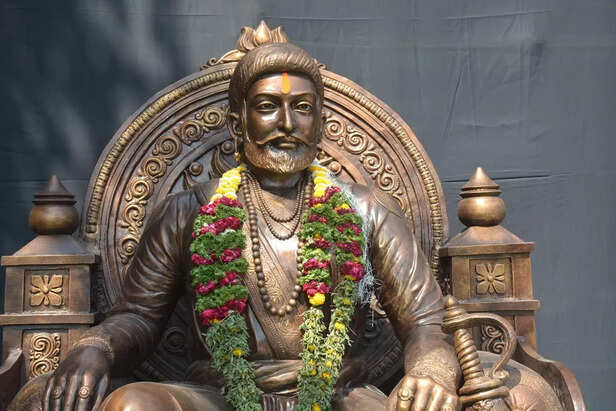
Martyr's Crown, Not a Sultan's Turban
( Image credit : Pexels )
If Shivaji Maharaj was the architect of Hindu resurgence in the 17th century, his son Sambhaji was its indestructible pillar. When the Mughal emperor Aurangzeb, infamous for his Islamic orthodoxy and tyranny, intensified his campaign to Islamize the subcontinent, Sambhaji became his greatest obstacle. Unlike many who bargained their faith for power, Sambhaji chose resistance.
In 1689, Sambhaji was captured by Mughal forces at Sangameshwar. What followed was not an execution but a ritual of cruelty. Aurangzeb gave him a chance to convert. Promises of royal status, wealth, and women were made. Sambhaji spat on them. He reportedly said, "I will never betray my mother Bhawani, nor will I ever denounce Dharma."
The torture was beyond imagination—his tongue cut out, his eyes gouged, skin flayed. For days he was paraded in public, mutilated yet unbowed. Finally, he was hacked to death. Yet in that torment, he became immortal—a symbol that Dharma can endure any horror.
Hemu Vikramaditya
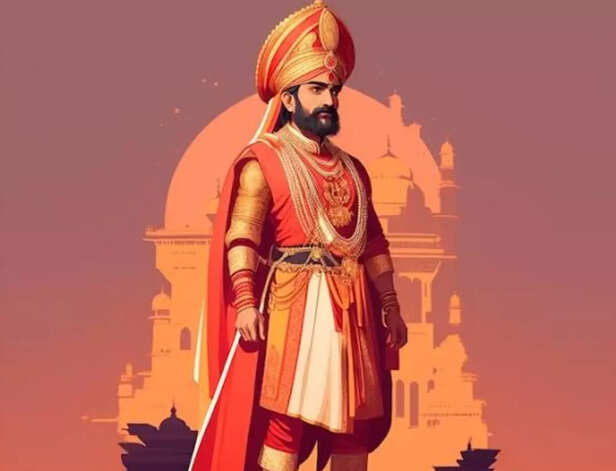
The Last Hindu Emperor of Delhi
( Image credit : Freepik )
A little over a century before Sambhaji's martyrdom, another Hindu hero faced the tide of tyranny—Hemu Vikramaditya. Born in a modest family in Rewari, Hemu rose through merit, becoming the commander and Prime Minister under Adil Shah Suri. He won 22 battles against Afghan and Mughal forces, culminating in his historic victory at Tughlaqabad.
In 1556, after capturing Delhi, he was crowned as the Hindu Emperor, taking the title "Vikramaditya." But destiny had other plans. At the Second Battle of Panipat, he was struck in the eye by an arrow and captured.
When presented before Akbar, the advisors pressed for his conversion before execution. Hemu, though bleeding and blind, remained firm. He was beheaded. His head sent to Kabul, body to Delhi—a grim message to Hindus. Yet what the Mughals tried to destroy only became stronger. Hemu's unwavering stance made him the last Hindu emperor to sit on the throne of Delhi.
Maharana Pratap Singh
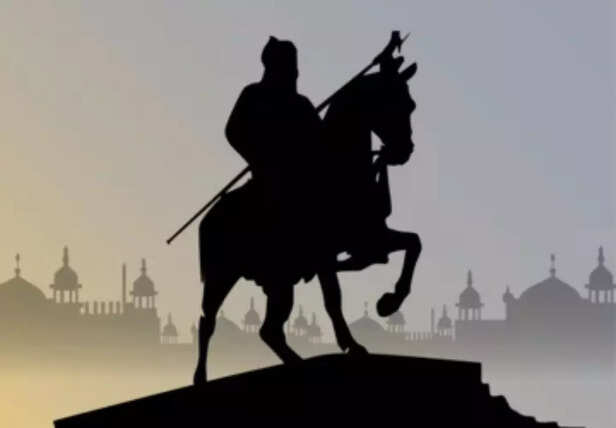
Mewar King Who Never Kneels
( Image credit : Pixabay )
If ever a man was born to defy empires, it was Maharana Pratap Singh of Mewar. Akbar, unlike Aurangzeb, was a master strategist. He lured kings with marriages, gifts, and governorships. Many Rajputs became his allies. But not Pratap.
In 1576, the Battle of Haldighati saw Pratap's army clash with the Mughals. Though technically a loss, Pratap retreated to the forests and began guerrilla warfare. He lived in exile, ate from leaves, slept in caves, and yet refused to sign a treaty.
His horse, Chetak, became a legend for sacrificing himself in battle. His people starved, but Pratap stood tall. He declared, "Better to live a day with honor than a lifetime in submission."
He rebuilt his forces and reclaimed large parts of Mewar. Till his death, he remained a sovereign Hindu ruler. His story is told not just with pride but with reverence, for he was a flame the Mughal wind could not extinguish.
Raja Pratap Singh of Amber
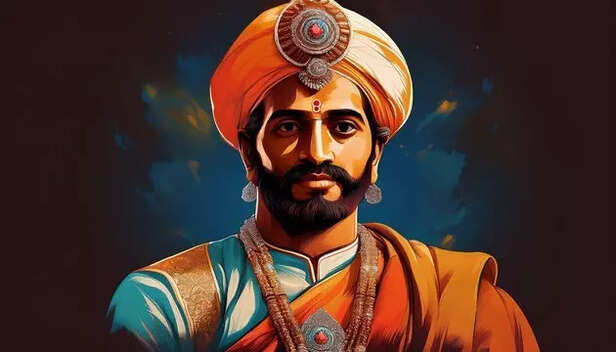
One Who Resisted Akbar’s Courtly Trap
( Image credit : Pexels )
While Raja Man Singh of Amber became one of Akbar's closest Rajput allies, an earlier scion of the same dynasty, Raja Pratap Singh, resisted Mughal overtures. Though his name does not shine in popular lore, his silent defiance carved a moral path for Rajput honor.
As Akbar expanded his influence, he used politics as a tool to dilute Hindu identity. Interfaith marriages, religious debates at Ibadat Khana, and symbolic conversions were part of this design. Raja Pratap Singh refused to be co-opted into this cultural assimilation.
His court continued to promote Hindu rituals, Vedic learning, and Rajput customs. He did not rebel openly, but in an age where silence could be interpreted as submission, he made it clear that not every Rajput was for sale.
Rana Sanga of Mewar
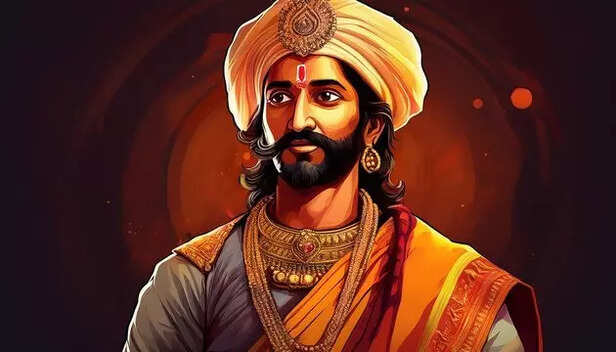
Foundation of Resistance
( Image credit : Pexels )
Long before Maharana Pratap, there was Rana Sangram Singh, or Rana Sanga, the lion of Mewar. Born into a kingdom constantly at war, Sanga bore 80 wounds and lost an eye and an arm in battle, but never his courage.
He united several Rajput clans and defeated Afghan rulers, emerging as the Hindu hope against Babur. In the Battle of Khanwa (1527), he came close to driving the Mughals out. Betrayed by some allies, he lost the battle but not his spirit.
Rana Sanga refused to accept Mughal dominance. He planned another campaign but was allegedly poisoned by nobles afraid of continued warfare. His death was a blow to Hindu unity, but his legacy inspired future resistance.
Raja Jaswant Singh of Marwar
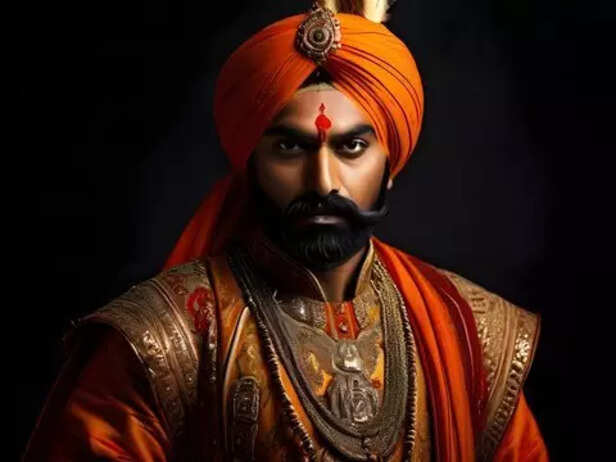
Refusal That Sparked a Rebellion
( Image credit : Pixabay )
Raja Jaswant Singh served the Mughals, but never abandoned his faith. As a general, he won several battles for Shah Jahan and Aurangzeb. However, when he died in 1678, Aurangzeb tried to seize Marwar and convert Jaswant's posthumously born son, Ajit Singh.
The Rajputs hid the child and began a fierce rebellion. Temples were attacked, but resistance only grew. Jaswant Singh had refused conversion in life, and his people refused betrayal in his death.
This saga became one of the most inspiring Rajput uprisings, leading to the eventual recognition of Ajit Singh as ruler of Marwar.
Maharaja Suraj Mal

Braj Defender Who Stormed Delhi
( Image credit : Freepik )
Maharaja Suraj Mal, ruler of Bharatpur, was a shrewd statesman and courageous warrior. He protected the sacred land of Braj, where Krishna had walked. In 1753, he heard of a Brahmin woman abducted by a Mughal official and threatened with conversion.
Without delay, Suraj Mal led his forces and attacked Delhi. His army defeated the Mughal Wazir, rescued the woman, and looted the Red Fort to fund temples and schools.
His actions weren’t mere retaliation; they were declarations of Dharma. Suraj Mal was not a king of wealth, but of honor.
Raja Raja Chola I
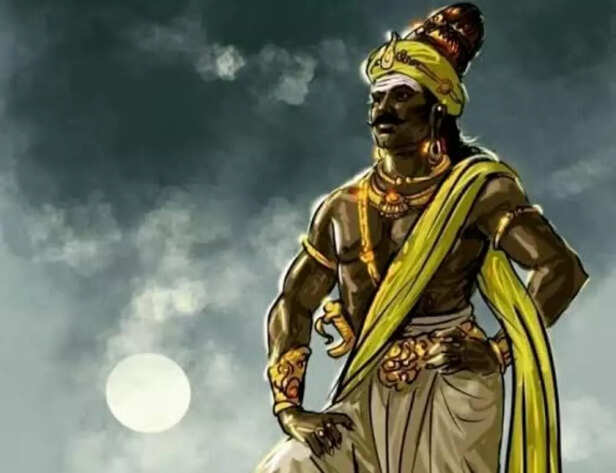
Southern Flame of Dharma
Though removed from Islamic invasions, Raja Raja Chola I (r. 985–1014 CE) ensured that Hindu culture expanded where it could thrive. He conquered parts of Karnataka, Kerala, and even Sri Lanka.
He didn’t face forced conversions but preemptively ensured that Sanatan Dharma had strongholds. He built the grand Brihadeeswara Temple, a marvel not just of architecture but of spiritual ambition.
Through naval expeditions, he spread Hindu influence to Southeast Asia. His rule was proof that Hindu kings could expand not just through war, but through temples, culture, and dharmic patronage.
Why These Stories Matter Today
Their lives challenge the modern myth that conversion was always peaceful, voluntary, or without resistance. They remind us that there were those who faced burning irons, rusted blades, and imperial threats but chose to die chanting the name of Bhawani, Vishnu, or Mahadev.
They prove that Dharma is not an idea; it is a force that can make a king embrace death with a smile rather than live in dishonor.
A Flame That Cannot Be Extinguished
They are not just in the pages of history. They live in every chant, every festival, every diya lit in a temple, and every child named after valor and virtue. Their courage built the India we know today—not one born out of convenience but carved through conviction.
They died, so we may live freely in the embrace of our Dharma.
Let us remember them not with tears, but with resolve.
